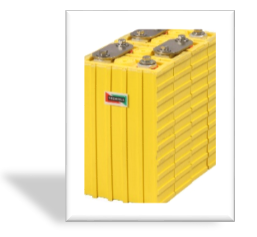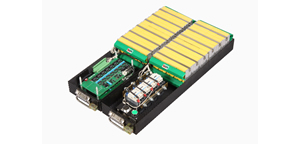LiFePO4 was developed by John Goodenough's research group at the University of Texas in 1997. Because of its low cost, non-toxicity, high abundance of iron, its excellent thermal stability, safety characteristics, good electrochemical performance and high specific capacity, it gradually gained market acceptance as the replacement for lead acid and nickel cadmium battery.
Lithium-iron-phosphate (LiFePO4) batteries are based on the original lithium-ion chemistry, but LiFePO4 is used as the cathode material instead of lithium cobalt dioxide (LiCoO2). The latter is found in the most commonly used batteries in laptops, cell phones, MP3 players, etc.
LiFePo4 cells design has positive electrode of LiFePo4 and negative electrode of carbon with nominal voltage of 3.2V.
LiFePO4 is an intrinsically safer cathode material than LiCoO2 since exothermic reactions cannot occur in batteries based on this material. LiFePO4 cells do not incinerate or explode under extreme conditions. In addition, LiFePO4 cells have a higher discharge current, are not toxic and have a much higher cycle life than the LiCoO2 cells.
TECHFILL Green Batteries System Main features:

- Excellent high rate discharge performance
- Over 2800 charge & discharge cycles
- Wide operation temperature range from -20 to 70゚C
- RoHs approved green products, environmental friendly
- Non fire hazard and non explosive
- Manufactured under ISO 9001 and ISO 14001 quality system
- Perect replacment for industrial lead acid and NiCd system
- No maintenance
We supply high quality LiFePo4 batteries togather with BMS up to 1000AH


